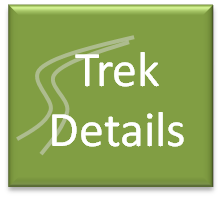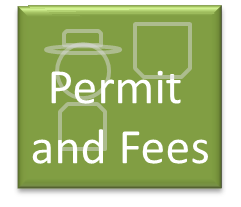
Summit of Naya Kanga seen from Kyanjin Gompa (May 2005) |
| Location | Naya Kanga peak, Langtang, Nepal |
|---|---|
| Highest point | 5846 m |
| Terrain | Lowland forest trail, Highland trail, Rock, Ice and Snow |
| Recommended duration | At least 15 days |
| Ease of access | Bus to starting point of trek |
| Special equipment | Mountaineering gears |
| Good | Varied terrain with some technical challenges |
| Not so good | Poor weather |
Blog post, Jonathan from Singapore
02 May - 19 May 2005
Naya Kanga, standing at 5846m is one of the lower trekking peaks found in Nepal. Although it is not a very technical peak, the mountain is notorious for its poor snow condition and bad weather. It is located in the Langtang valley, which is the 3rd most popular trek after Annapurnna and Everest. The combination of soft, powdery snow, worsening weather and possible danger of avalanche had forced my climbing partner and me to abort the summit attempt. Nevertheless, our climbing sherpa, Mingma, had charted a less frequently used route, if at all, to reach the Northeast ridge of Naya Kanga.
As with most mountains, there are a few routes that can be taken to reach the summit of Naya Kanga. The ever-changing weather conditions ensure that there is no fixed route to reach the summit of Naya Kanga. The most common route taken is via the Northeast ridge. Although most people reached the ridge from the left side passing by Ganja La, our Mingma decided to approach the ridge from its right side. Daily snowfall for the pass few days had piled thick snow on the commonly used basecamp and highcamp. This prompted Mingma to try an alternative approach.
The alternative basecamp is sheltered by high ridges on three corners from the wind and has an altitude of 4200m. Generally, there is no snow found here unless it has been snowing heavily the day before. The trek to the highcamp at 5300m involved slogging through soft snow and the highcamp itself was on snow. During the days at the basecamp and the first day at the highcamp, the weather had been kind with clear skies in the morning but clouds began to move in during the late afternoon. On our acclimatization climb on the highcamp, the snow was hard and crisps in the morning.
However, the weather started to turn for the worse during the afternoon. Snow began to fall and it did not stop until midnight. Our summit attempt was postponed but the weather for the next day was bad. The sky was overcast in the morning and snow starts to fall again in the afternoon. Having stayed a few days at the highcamp, we decided to make a push for the summit that night. Even at 2.40a.m in the morning, the snow was soft at the highcamp. Soon, we reached a slope with gradient of about 45 degrees. It was a long stretch that gradually became increasingly steep but the snow remained soft. The soft snow condition meant that I needed to raise my foot up to waist level to plant the next step which would then sink a few inches into the soft snow.
When the sun came up, the sky was once again overcast and strong wind start to pick up the powdery snow and lashed at us. The wind-blown snow would also quickly fill up the deep steps from the climber in front. I was already contemplating a safe retreat when some snowballs start to flow down the slope, crossing our path. Mingma instructed us to run on the spot as the snowballs reached us. Although Mingma said that this situation was normal, we decided that the snow condition was too unstable and descended, at an altitude of 5200m, about halfway to the summit of Naya Kanga.

| Route Description (As of May 2005) | ||||||
|
Day 1: Kathmundu (1,300m) to Syabrubesi (1,460m), 9hrs This is a 10hrs drive to the starting point of the trek. The first half of the distance involves going down to 400m on tarred road to Trisuli River. The tarred road runs parallel to the river until it reaches the town of Trisuli. After which the vehicle has to go on gravel, dirt road before ascending. The rest of the journey will be very bumpy which seems to be meant for 4-wheel drive. It is amazing how the rickety local bus is able to take this punishing road and reach the destination without any mishap. In this small town, there is electrical supply and there is even telephone service in one of the hotels. Day 2: Syabrubesi (1,460m) to Lama Hotel (2,440m), 8hrs Although Nepal is famous for its snow mountains and high altitude, this part of the journey will pass through tropical forest with dry leaves littering the narrow trail. The trail runs beside Lantang Khola (River) and the ascent is gradual with short stretches of steps and steeper sections. There is no electrical supply at Lama Hotel but there is solar hot shower. Day 3: Lama Hotel (2,440m) to Langtang (3,500m), 8hrs From Lama Hotel towards Langtang, the vegetation changes from tropical forest to coniferous forest at Riverside Hotel. The coniferous made way to montane shrubs as Langtang comes within sight. Some sections of the route are long and steep. Along the way, there is am army check-post at Ghoretabela where visitors need to sign-in and have their permits checked. Langtang is quite a big settlement compare to other settlements found along the way. Many guesthouses have electric power supply and solar hot shower. There are many Mani walls along the road. There are a few slopes that go up to about 3700m to meet the steep vertical walls that flank the left side of the settlement, which is good for acclimatizing. Day 4: Langtang (3,500m) to Kyanjin Gompa (3,850m), 3hrs After an initial ascend, the rest of the way is gentle until Kyanjin Gompa. It is also closer to Kyanjin Gompa when Naya Kanga can be seen on the right side of the trail. Kyanjin Gompa is a very good place for acclimatization. There is Kyangin Ri (4665m) and Tsergo Ri (4895m) where climbers can do their acclimatization. The first summit of Kyangin Ri at 4350m is marked with prayer flags and the second summit, more than an hour away is at 4665m. Although there is no permanent snow cover during late spring, snowing can still be expected. Kyanjin Gompa is a good place to rest, as there is electric supply here and solar hot shower. There is also a heli-pad if there is a need for an evacuation. Any climbers that wish to climb the trekking peaks and expedition peaks need to have their permits checked here. Day 5: Acclimatization day Day 6: Kyanjin Gompa (3,850m) to Naya Kanga Basecamp (4,200m), 2.5hrs Rather than going up by the usual East face of Naya Kanga via Branchen Kharka, another way is by the North face of the mountain. The trail to the basecamp passes through Juniper forest and montane shrubs. The basecamp is sheltered on three sides and there is a small stream with flowing water. However, the liquid water may sometimes dry up if there is not enough melt snow higher up. Patches of snow can be seen at the basecamp even during late spring. As the highcamp is about 3hrs of ascend away, it is possible to go up to the highcamp for acclimatization.
Day 7: Acclimatization Day 8: Basecamp (4,200m) to Highcamp (4,600m), 3hrs Even at late spring, the highcamp is built on snow. Although one can avoid the snow for the initially half of the journey to the highcamp, the second half of the journey involves traversing a snow slope of about 40 degrees gradient to a small moraine ridge. The leeward side of the moraine ridge consists of rocks and boulders. One has to descend by the leeward side of the ridge before reaching the snow-covered highcamp.
Day 9: Acclimatization Day 10: Highcamp (4,600m) to Summit of Naya Kanga (5,846m) and back to Basecamp (4,200m) As the basecamp is not far from the highcamp, it is advisable to retreat to the basecamp if the weather is not favorable for summit attempt next morning. The way to the summit involves going via an avalanche path before joining the North-east ridge. Solid ice-balls the size of a basketball can be seen just before going up the North-face of the mountain. There is a 2hrs trek through relatively easy slopes to reach the foot of the face of the mountain. After which, there is a long 45 degrees slope to ascent before reaching steeper slopes of more than 60 degrees. Some fix ropes maybe be useful although not necessary to reach the North-east ridge. The journey from the highcamp to the ridgeline is expected to 8-10hrs. From the ridge to the summit of Naya Kanga is expected to take another half to one hour.
|

Mr. D. B. Koirala, MD
P.O. Box # 5619, Durbar Marg, KTM
Tel: 231039
Fax: 222422
E-mail: db_chomotrek@infoclub.com.np

| Description | Cost | Remarks |
| Travel | ||
| Singapore to Kathmundu and back | S$816 per person | Thai airway including Singapore airport tax and misc charges |
| Nepal Airport Tax (International) | Rs1130 | |
| Nepal Tourism service fee | Rs565 | pay together with airport tax |
| Permits | ||
| Visas | S$65 per person | |
| Trekking peak fees | US$350 | 1 to 4 person |
| Package Costs for 2 person | ||
| Climbing Sherpa and equipment cost | US$200 | |
| Local transport (Airport transport, KTM-SHABRU-KTM) | US$55 | |
| 2 nights Potala guest house (Twin sharing) | US$30 | |
| National Park Fee | US$70 | |
| 15 Days expedition with tea house trek | US$1152 | |
Exclusion
|
||
| AIA | S$118 per person | For 22 days |
| Tippings per crew member | ||
| Summit bonus for guide | US$100 | |
| Sirdar | US$70 | |
| Chief cook | US$30 | |
| Assistant climbing guide | US$30 | |
| Porters | US$1 per porter per day of trek | 4 porters |
1 Sing Dollar : 40 Nepali Rupee (Rs)
1 Sing Dollar : 0.556 US Dollar (US$)
Note: Although equipments can be rented in Nepal, it is still better if you bring your own equipment as those over there are quite old and may not be that safe to use.

| Equipment | Quantity | Description/Model | Remarks |
| Clothings | |||
| Polar Fleece 200 | 1 | Nepali thick fleece | |
| Down Jacket | 1 | Kathmundu "Goose down" | |
| Thermal Long-johns | 3 pairs | Polypropylene, wool | |
| Light weight fleece pants | 1 | Nepali fleece | |
| Gortex Jacket | 1 | Mammut | |
| Gortex Pants | 1 | ||
| Footwear | |||
| Mountaineering boots | 1 pair | Salomon SM 9 | |
| Trek-in boots | 1 pair | ||
| Woolen socks | 2 pairs | ||
| Socks inner liner | 2 pairs | ||
| Sandals | 1 pair | ||
| Gaiters | 1 pair | ||
| Gloves | |||
| Fleece gloves | 1 pair | Pro CAM-FIS, Polartec | |
| Inner liner gloves | 2 pairs | Polypropylene | |
| Waterproof ski gloves | 1 pair | The North Face Gor-tex | |
| Headwear | |||
| Sunhat | 1 | ||
| Fleece hat | 1 | Nepali fleece hat | |
| Balaclava | 1 | Mammut Facemask | |
| Sleeping accessories | |||
| Sleeping bag | 1 | Down fill weight 600g | |
| Sleeping pad | 1 | ||
| Mattresses | 1 | Provided by agent | |
| Eye wear | |||
| Sunglasses | 1 | Addidas Evil Eye Pro, with space lens | |
| Snow goggles | 1 | Oakley "O" Frame | |
| Hydration | |||
| 1L Bottle | 1 | SIGG | |
| 0.6L Bottle | 1 | SIGG | |
| Neoprene insulating pouch | 2 | SIGG | One for each bottle |
| Climbing Equipment | |||
| Climbing Helmet | 1 | ||
| Crampons | 1 pair | Rent in Nepal | |
| Ice hammer | 1 | Rent in Nepal | |
| Ice axe | 1 | Rent in Nepal | |
| Climbing Harness | 1 | Petzl Corax | |
| Belaying device | 1 | Camp Shell ATC | |
| Ascender | 1 | Jumar | |
| Locking Carabineers | 5 | 2 pear, 3 standard | |
| Snap Links | 3 | ||
| Prussik slings (5-7mm) | 3 | Beal | 1 x 2m; 1 x 5m; 1 x 0.5m |
| Slings (20mm) | 2 | Beal | 1 x 1m, 1 x 2m |
| Tape (25mm) | 1 | 3m | |
| 5m Cordilac | 1 | 4mm, Aramid | |
| Misc | |||
| 65L Expedition backpack | 1 | Lowe alpine Frontier 65 +15 | |
| Duffle Bag | 1 | ||
| 40L Daypack | 1 | Salomon SK40+10 | |
| Pocket Knives & Tools | 1 | Richartz maxi 7 | Maybe better to get one with pliers and screw drivers |
| Watch | 1 | SUUNTO Vector | Excellent to have, got altimeter which is very useful |
| Trekking pole | 1 pair | Komperdell Northern Light | |
| Headlamp | 1 | Petzl Tikka | Bring extra batteries |
| Personal Care | |||
| Sun block | 1 | Hamilton Sportblock SPF70 | |
| Lip Screen | 1 | Chap Stick ULTRA SPF 30 | |
| First Aid kit | 1 | ||
| Toiletries | 1 set | ||
| Toilet Paper | 1 roll | ||
| Pee bottle | 1 | Nalgene | Need at least 1L bottle |
| Umbrella | 1 | ||
| Washing powder | 1 | ||
| Clothes hanger | 3 | ||
| Nail clipper | 1 | ||
| Shaver | 1 | ||
| Body powder | 1 | ||
| Repair Kit | 1 | ||
| Camera | 1 | Bring extra batteries | |
| Nutrition | |||
| Vitamin C | Redoxin | ||
| Group stores | |||
| High altitude tents 2-men | 3 | Vango imitation tents | Provided by agent |
| Fixed Ropes | 100m | Nylon ropes | Provided by agent |
| Dynamic ropes | 60m | ||
| Kerosene stoves and fuel | Provided by agent | ||
| Cooking and eating utensils | Provided by agent | ||
| Group first Aid Kit | 1 | Complete with medications | |
| Ice Screw | 2 | ||
| Snow stake | 4 | ||
Medications
The following are the medicine used during the expedition. It is important that all the members in the team are aware of how to use the appropriate medicine. Where possible, the type of medicine, its usage and dosage should be clearly labeled on the medicine.
Diarrhoea
Vomiting
Fever
Sorethroat
Cough
Pain
Gastric
AMS
|

| Date | Description | Source |
|---|---|---|
| 05 October 2015 | Foot trail to Langtang Valley opened | The Kathmandu Post |
| 17 May 2015 | The beautiful Langtang valley was almost obliterated when the second quake hit last week, reducing a popular trekking village to rubble | the guardian |



